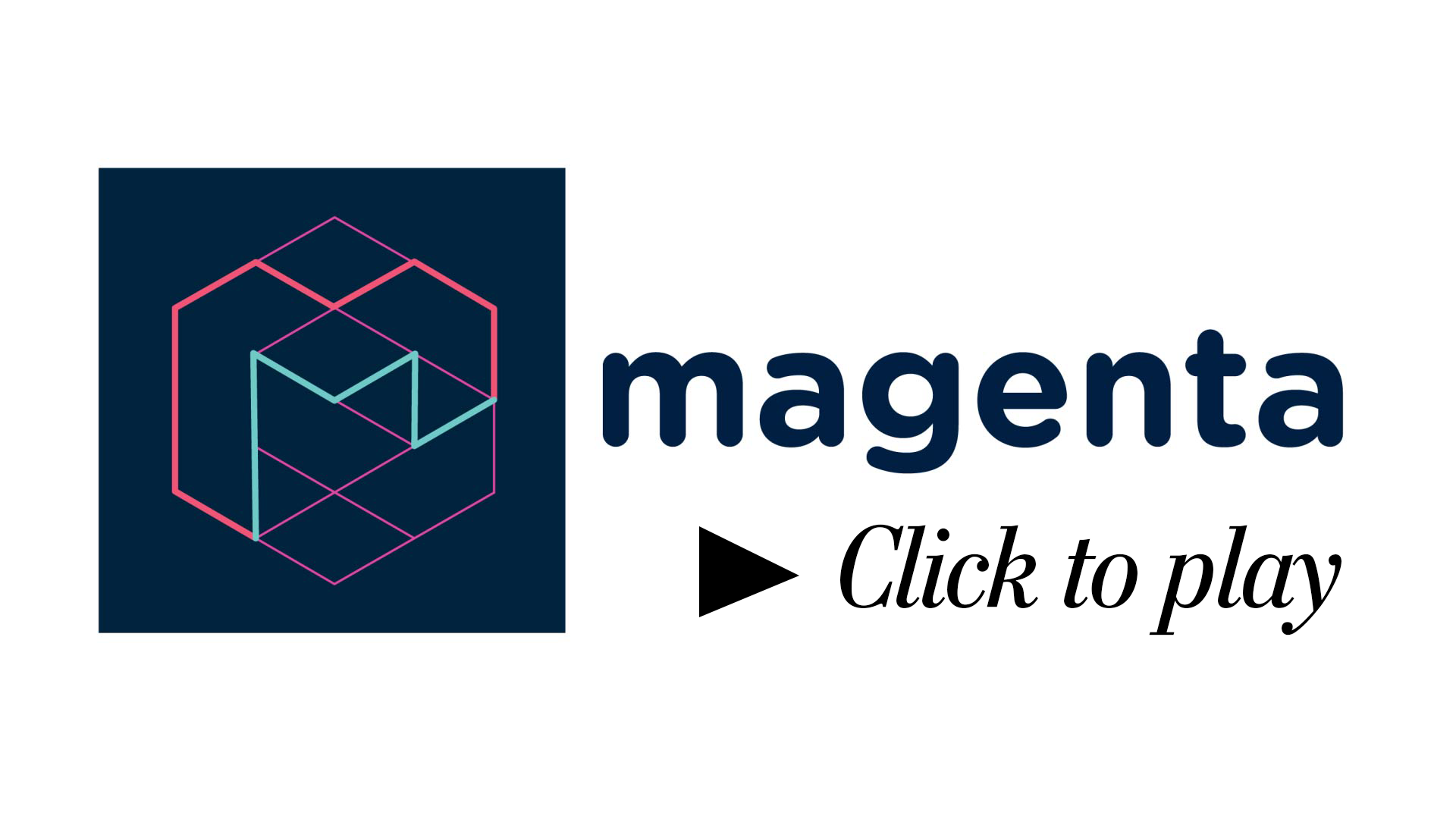
“I ask him about volition, whether machines can create works of art on their own. Rather his aim is to ‘increase our creativity as people a cool piece of technology to work with.'”Īs head of Project Magenta, creativity is always on Eck’s mind. He doesn’t want to step back and ‘watch a machine create art,’ he says. At present, fully autonomous creative machines are not on Eck’s radar. The essence of Magenta’s existence is to be a creative feedback loop, a push and pull, between us and AI, increasing our human creativity. To Eck, “the engineers at Magenta are more Les Paul and the artists more Jimi Hendrix. ‘I was from the floppy disc era,’ he says, ‘but never thought of myself as a computer person.’ Nevertheless, he became proficient at coding.” An open and outspoken man, he first took an interest in computers at the age of thirteen. Here are some of the insights he provides with regard to one of Google’s most exciting initiatives: “As head of Google’s Project Magenta, Douglas Eck has found a way to combine his twio loves - AI amd music - in his work. “Twenty-first century computers equipped with neural networks can learn the rules of baroque music from Bach’s scores and work out for themselves the probability of one note following another - which was precisely how Project Magenta set its computer to work to produce its little melody.” Miller provides a thorough examination of the world of AI-powered creativity. The directions won’t give you the pretty, rainbow screen seen in Google’s prototype, but you will get a cool neural instrument that generates wildly inventive sounds.In The Artist in the Machine, Arthur I.
Generate music project magenta how to#
It even includes details on how to create the PCB (printed circuit board) and schematics for the housing. Although the NSynth Super isn’t available for purchase, Google has offered directions to make one from scratch using Raspberry Pi. NSynth Super can be played via any MIDI source, like a DAW, sequencer, or keyboard, and features some onboard parameter shaping, like basic ADSR (attack, decay, sustain, release). Ultimately, while the idea was novel and the synth creates otherworldly noises, it was quite expensive and not entirely user friendly. The NSynth Super has some parallel to the German-made Hartmann Neuron, a polyphonic synth produced from 2002 to 2005 that analyzes and creates computer models of sounds which can be controlled in various ways. NSynth Super synthesizes entirely new sounds based upon the acoustic qualities of individual instruments In the demo video above, blending a flute and a snare makes a sound that’s glassy and quasi-sharp, without any overtly “drum-like” qualities.

Rather, it’s synthesizing an entirely new sound based upon the acoustic qualities of the individual instruments. What’s particularly unique is that NSynth Super isn’t just layering sounds on top of each other. These instruments can be mixed by gliding your finger across the pad.

The hardware Google has devised to play with the NSynth algorithm features a central X / Y pad where each quadrant can be assigned an instrument (sort of like using effects on a Kaoss Pad). The NSynth algorithm learns the core qualities of what makes up an individual sound and then is able to combine sounds to create something completely new.

As Douglas Eck, research scientist on the Google Brain team, says in the video above, NSynth doesn’t generate notes, but rather, the actual sound of an instrument. The NSynth Super is a piece of hardware that brings the NSynth technology to life. NSynth Super utilizes Magenta’s NSynth, Google’s neural network that generates sounds, and directions for building your own NSynth Super are available on Github. Magenta, Google’s research project that looks at how AI can help people be more creative, just released an open source experimental instrument called NSynth Super.


 0 kommentar(er)
0 kommentar(er)
